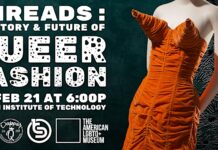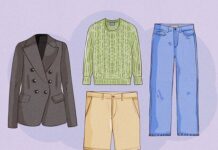
In the past decade we’ve seen the beginnings of the mixed reality revolution. From Snapchat filters to Pokémon GO, augmented reality has become a part of our everyday lives. Virtual reality, meanwhile, is becoming more advanced and affordable, delivering new ways of entertaining and educating the next generation. It marks a monumental technological shift; one where there will be limitless opportunity to express your creativity; one where you can be who you want to be; one where you can build a world you want to live in. Yeah it sounds like the premise for a 90s sci-fi movie, but technology is currently advancing at an exponential rate that it will soon be at the tip of your fingers. Computer processors are getting faster, more powerful, increasingly capable, and more accessible. This, in turn, will ultimately alter the LGBTQ+ experience as we currently know it.
The term ‘mixed reality’ is one that houses all of these new formats; a blend of physical reality with digital elements, virtual experiences and hyper-connectivity. “It’s trying to define any immersive digital experience or technology,” says Alex Semenzato, Director of Global Strategic Partnerships at Talenthouse. “Anything that is multi-sensory, 3D and immersive. It all falls under XR, which stands for mixed reality. People know AR and VR, but then there are all these other wacky and wonderful things and that’s when they all come under mixed reality.” These new technologies are becoming increasingly sophisticated – as is the way we view them as consumers. “A couple of years ago people would’ve thought it was gimmicky, but now we are starting to see it be used for more utilitarian purposes like placing furniture in your home from IKEA, or [looking around] car showrooms. Even more so with the pandemic, it’s really enabled people and brands to provide these digital experiences whilst people are safe at home. It’s the next revolution. As more and more brands do that, it will head towards a wider consumer base. Over time there will be more consumer adoption, and people will realise that it’s something that’s here to stay and can actually be quite useful.”
This fast-growing market needs aspiring creatives skilled-up to understand the technology behind XR and to create these new future-facing experiences for consumers. That’s where Reality.House comes in. A new platform launched earlier this year, Reality.House will provide inspiration, education and development opportunities for creatives who are keen to get involved with, or want to advance their skill set in, mixed reality formats. There’s educational content for different levels of ability, news on the latest technological developments, and insight on innovative ways creatives can connect with brands to respond to commercial briefs. “We saw this opportunity to provide new opportunities to up-skill creators on the power of AR – literally bring your imagination to life,” says Alex. “Whether you’re a 2D or 3D creator, you’re halfway there. You have the foundational skills to use tools like Facebook’s Spark AR.”
For director and writer Jade Ang Jackman, mixed reality offers her new avenues of creativity that she hasn’t had as much access to in the past. “As a filmmaker, I’ve always been quite interested in how I can incorporate elements of heightened reality in the set building,” she says. “Special effects and VFX can be quite expensive. But what’s exciting about mixed reality, AR and VR, is that it has become way more accessible than ever.” Jade is a contributor to the Reality.House platform and has explored ways technology is helping people enhance their creativity. As a member of the LGBTQ+ community, naturally her perspective is through a queer lens.








